This is a list of archives in Finland.
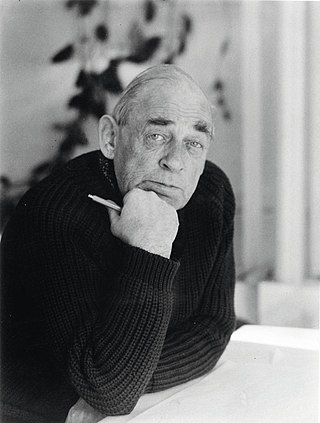
Hugo Alvar Henrik Aalto was a Finnish architect and designer. His work includes architecture, furniture, textiles and glassware, as well as sculptures and paintings. He never regarded himself as an artist, seeing painting and sculpture as "branches of the tree whose trunk is architecture." Aalto's early career ran in parallel with the rapid economic growth and industrialization of Finland during the first half of the 20th century. Many of his clients were industrialists, among them the Ahlström-Gullichsen family, who became his patrons. The span of his career, from the 1920s to the 1970s, is reflected in the styles of his work, ranging from Nordic Classicism of the early work, to a rational International Style Modernism during the 1930s to a more organic modernist style from the 1940s onwards.
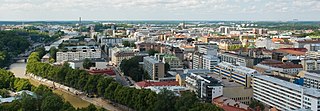
Turku is a city and former capital on the southwestern coast of Finland at the mouth of the River Aura, in the region of Southwest Finland (Varsinais-Suomi) and the former Turku and Pori Province. The region was originally called Suomi (Finland), which later became the name of the whole country. The population of Turku is 201,889, making it the sixth largest city in Finland. The Turku region has a population of 346,662, making it the third largest urban area in Finland after the Helsinki and Tampere regions. The city is officially bilingual, with 5.5 per cent of the population having Swedish as their mother tongue.

The Royal Academy of Turku or the Royal Academy of Åbo was the first university in Finland, and the only Finnish university that was founded when the country still was a part of Sweden. It was founded in 1640. In 1809, after Finland became a Grand Duchy under the suzerainty of the Russian czar, it was renamed the Imperial Academy of Turku. In 1828, after the Great Fire of Turku, the institution was moved to Helsinki, in line with the relocation of the Grand Duchy's capital. It was finally renamed the University of Helsinki when Finland became a sovereign nation-state in 1917.

The University of Helsinki is a public university in Helsinki, Finland. The university was founded in Turku in 1640 as the Royal Academy of Åbo under the Swedish Empire, and moved to Helsinki in 1828 under the sponsorship of Tsar Alexander I. The University of Helsinki is the oldest and largest university in Finland with the widest range of disciplines available. In 2020, around 31,600 students were enrolled in the degree programs of the university spread across 11 faculties and 11 research institutes.

Åbo Akademi University is the only exclusively Swedish language multi-faculty university in Finland. It is located mainly in Turku but has also activities in Vaasa. Åbo Akademi should not be confused with the Royal Academy of Åbo, which was founded in 1640, but moved to Helsinki after the Turku fire of 1827 and is today known as the University of Helsinki.
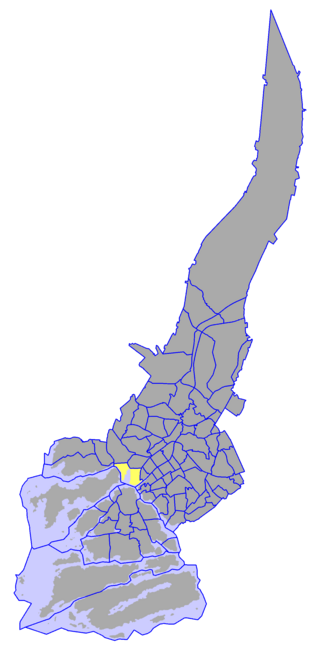
The Port of Turku is a port located in the south-west of Finland, where the mainland meets the beginning of the Turku archipelago. Sited within Finland's sixth largest city, the port principally handles traffic between Turku and the Swedish capital of Stockholm and the enclaved Åland.

The I District is the easternmost of the central districts of Turku, Finland. It is located on the east side of the river Aura, between Uudenmaankatu and the Helsinki motorway. The main street Hämeenkatu divides the district in Sirkkala and Universities area, and continues as the national road 10 towards Hämeenlinna. The district hosts all three universities of the city, the University of Turku, Åbo Akademi, and the Turku School of Economics and Business Administration. The city's central hospital TYKS is also located in the district, as well as the Cathedral of Turku and the residence of the Archbishop of Finland.

Erik William Bryggman was a Finnish architect. He was born in Turku, the youngest of the five sons of Johan Ulrik Bryggman (1838–1911) and Wendla Gustava Bryggman (1852–1903). He began studies in architecture at Helsinki University of Technology in 1910 and qualifying as an architect in 1916. In 1914 he and fellow student Hilding Ekelund made a study trip to Denmark and Sweden. In 1920 he travelled to Italy, where he became inspired more by the local vernacular architecture than the classical or Baroque works. He worked in Helsinki for various architects, including Sigurd Frosterus, Armas Lindgren, Otto-Iivari Meurman and Valter Jung before starting his own office in Turku in 1923. Bryggman's architecture is noted for its combination of Nordic, classical and modernist characteristics.
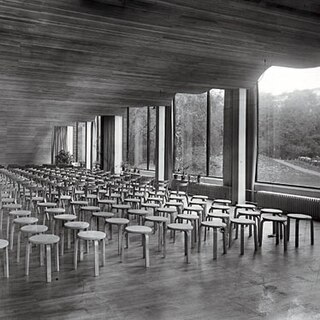
The architecture of Finland has a history spanning over 800 years, and while up until the modern era the architecture was highly influenced by Sweden, however there was also influences from Germany and Russia. From the early 19th century onwards influences came directly from further afield: first when itinerant foreign architects took up positions in the country and then when the Finnish architect profession became established.

Vartiovuori Observatory is a former observatory in Turku, Finland. The observatory, designed by Carl Ludvig Engel, was originally built for the Royal Academy of Turku. The neoclassical building was completed in 1819. The observatory is situated atop the Vartiovuori hill, and it is clearly visible from different sides of the city centre.

The National Archives of Finland is a Finnish government agency under the Ministry of Education and Culture. It is responsible for archiving official documents of the Finnish state and municipalities. It consists of three locations in the capital Helsinki and seven former regional archives, which were incorporated into the National Archives in 2017 and have since been its branches.
Vienna International Apartment is an exhibition venue for contemporary visual arts in Helsinki, Finland. It was created in Vienna, Austria in 2001, moved to Turku, Finland in 2003, to Helsinki, Finland in 2005, to Brussels, Belgium in 2007, to Geneva, Switzerland in 2010, to Helsinki, Finland in 2014, and to Berlin, Germany in 2015. In 2004, the Vienna International Apartment Art Association, a not-for-profit association established to support the activity, was registered in Finland.
Leo Waldemar Törnqvist was one of the first professors of statistics in Finland, and the first to achieve international recognition. He taught at the University of Helsinki from 1943 to 1974, and developed techniques that are used in official price and productivity statistics.

The Academic Female Voice Choir Lyran, also referred to as simply Lyran, is a Finland-Swedish academic female voice choir in Helsinki, Finland. It is the only women's choir affiliated with the University of Helsinki.
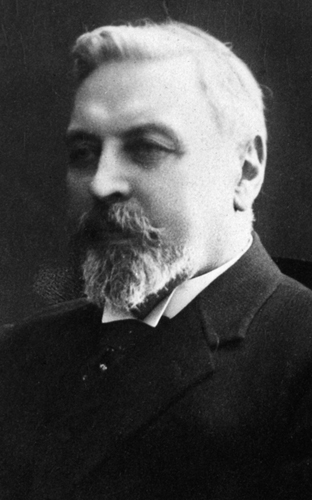
Robert Magnus Dahlström was a Finnish businessman and philanthropist.

The Sibelius Museum is a museum of music, named after the Finnish composer Jean Sibelius. The museum is located close to Turku Cathedral in the historical city centre of Turku on the southwest coast of Finland. It is the only museum devoted to music in Finland. The museum houses a wide collection of historical music instruments from around the world. The archives of the museum include documents The museum was first founded during the 1920s as a seminar for the Department of Musicology at Åbo Akademi University, and has later developed into its own department. The Museum is currently organised and funded by the Åbo Akademi Foundation. The current building was built and opened in 1968 and it was designed by architect Woldemar Baeckman.

Carin Bryggman was a Finnish interior architect.